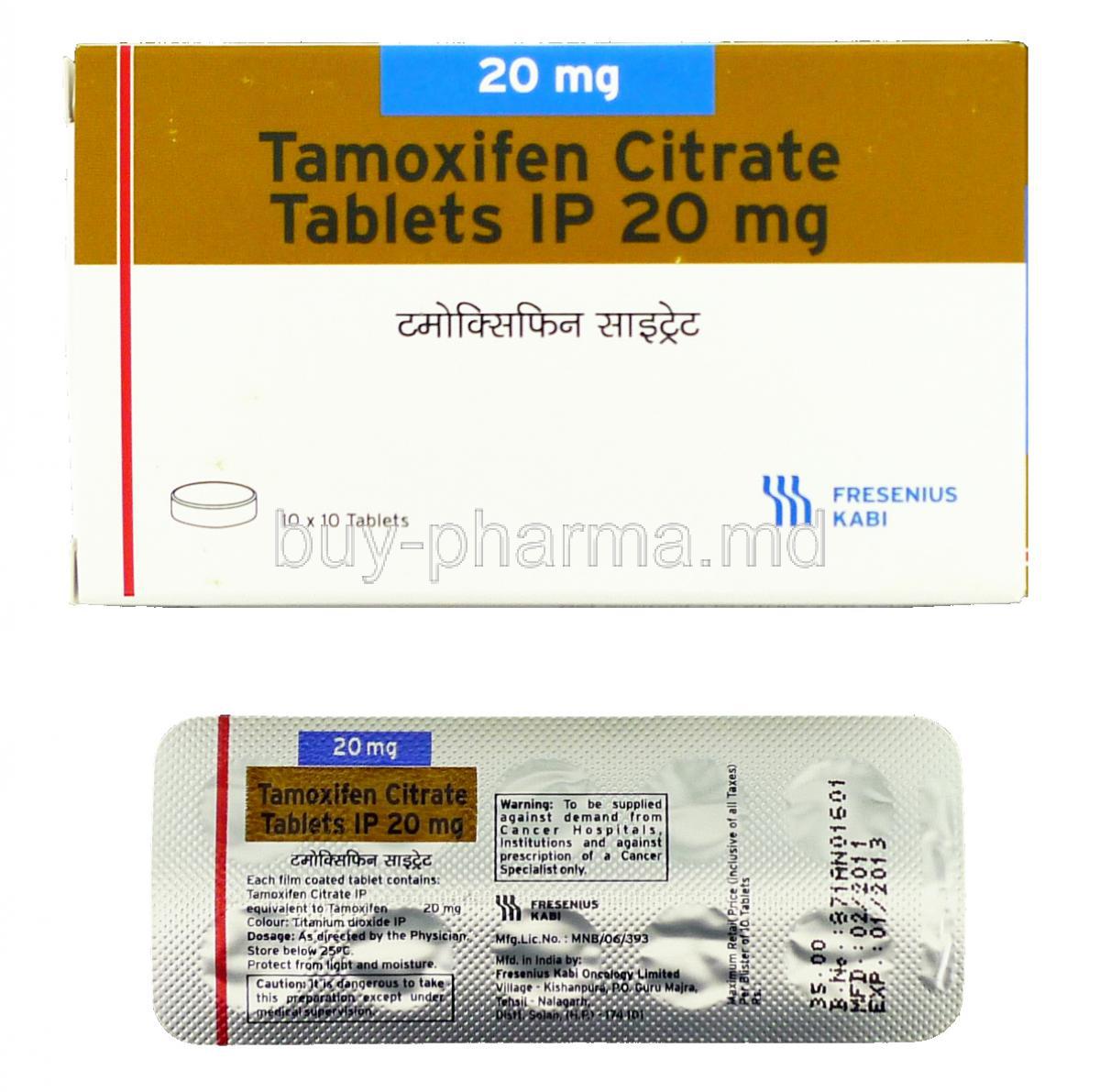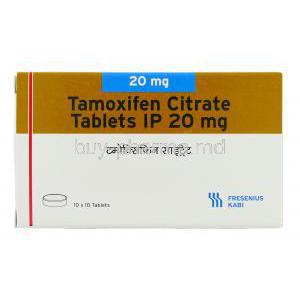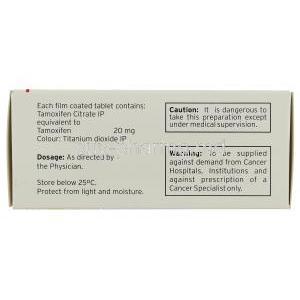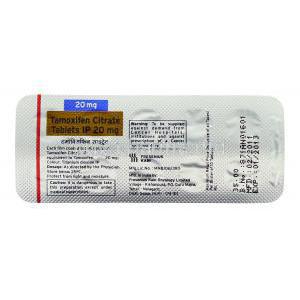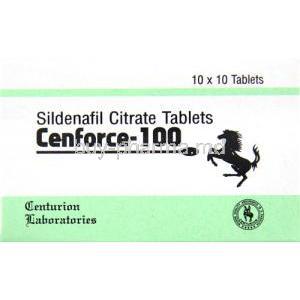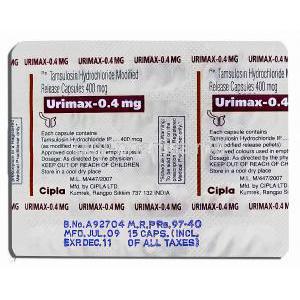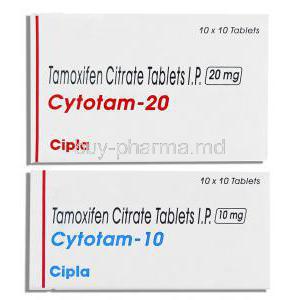Introduction to Tamoxifen
Overview of Tamoxifen and Tamoxifen Citrate
Tamoxifen, most commonly available in the citrate salt form, is a cornerstone medication in the field of oncology. Classified as a selective estrogen receptor modulator (SERM), it has unique dual properties: antagonizing estrogen in certain tissues while mimicking it in others. This pharmacological versatility has made it indispensable in the treatment and prevention of hormone-sensitive cancers.
Historical Development and Approval Timeline
First synthesized in the 1960s, tamoxifen was initially investigated as a potential contraceptive. Its unexpected effects on hormone-sensitive tumors redirected research focus. By the 1970s, clinical trials confirmed its ability to inhibit breast cancer cell proliferation, leading to its regulatory approval. Since then, tamoxifen has become a globally recognized therapeutic agent, reshaping standards of care in oncology.
Importance in Breast Cancer Treatment and Beyond
Tamoxifen has redefined survival outcomes in patients with estrogen receptor–positive (ER+) breast cancer. Beyond oncology, its pharmacodynamic profile has sparked research in reproductive medicine, endocrinology, and even psychiatry. Its significance extends far beyond breast cancer, making it a multi-faceted therapeutic agent in modern medicine.
Composition and Formulations
Active Ingredient: Tamoxifen Citrate
The active pharmaceutical substance is tamoxifen citrate, a crystalline compound that readily dissolves for oral administration. The citrate salt enhances bioavailability and ensures consistent absorption.
Available Dosage Forms: Tablets, Oral Solution
- Tablets: The most common formulation, available in multiple strengths to suit individualized treatment regimens.
- Oral solution: An alternative for patients unable to swallow solid dosage forms, particularly useful in pediatric or geriatric populations.
Inactive Components and Excipients
Formulations often contain excipients such as lactose, magnesium stearate, and cellulose. These agents stabilize the compound, improve palatability, and enhance shelf life, though they may occasionally cause sensitivity in predisposed individuals.
Mechanism of Action: How Tamoxifen Works
Role as a Selective Estrogen Receptor Modulator (SERM)
Tamoxifen binds to estrogen receptors, displacing endogenous estrogen. Its selective activity enables it to act as an estrogen antagonist in breast tissue, while simultaneously displaying partial agonist activity in other organs.
Estrogen Receptor Antagonism in Breast Tissue
By occupying estrogen receptors in breast cells, tamoxifen prevents estrogen-mediated transcription of genes responsible for cell division. This mechanism curtails malignant proliferation in ER+ tumors.
Partial Agonist Activity in Bone, Uterus, and Cardiovascular System
Unlike pure antagonists, tamoxifen maintains partial estrogenic activity. This provides benefits such as bone density preservation and lipid profile modulation, though it also carries risks such as endometrial stimulation.
Molecular Pathway of Estrogen Blockade
The drug induces conformational changes in estrogen receptors, hindering recruitment of co-activator proteins. This epigenetic modulation alters cellular transcriptional activity, contributing to its anti-tumor efficacy.
Approved Medical Uses of Tamoxifen
Treatment of Estrogen Receptor–Positive Breast Cancer in Women
Tamoxifen is a first-line therapy for women with ER+ breast cancer, reducing recurrence rates and prolonging survival.
Adjuvant Therapy for Early-Stage Breast Cancer
Used after surgical intervention, tamoxifen minimizes the likelihood of tumor relapse and distant metastasis.
Management of Metastatic Breast Cancer in Premenopausal and Postmenopausal Patients
In advanced disease, tamoxifen stabilizes tumor growth, alleviates symptoms, and improves quality of life across diverse patient groups.
Risk Reduction in High-Risk Women for Breast Cancer Prevention
In women with strong family history or genetic predisposition, tamoxifen reduces the incidence of invasive breast cancer.
Treatment of Ductal Carcinoma in Situ (DCIS)
Following lumpectomy and radiation, tamoxifen lowers recurrence risk in women diagnosed with DCIS, a precursor to invasive disease.
Off-Label Uses of Tamoxifen
Fertility Treatment in Anovulatory Infertility
Tamoxifen, as an alternative to clomiphene, stimulates ovulation by disrupting estrogen’s negative feedback on the hypothalamic-pituitary axis.
Management of Gynecomastia in Men
By antagonizing estrogen’s effect in breast tissue, tamoxifen reduces painful swelling and tissue growth in male patients.
Use in Bipolar Disorder and Psychiatric Conditions Under Investigation
Research suggests tamoxifen’s inhibition of protein kinase C may offer therapeutic benefit in mood stabilization, though definitive data remain limited.
McCune-Albright Syndrome and Pediatric Indications
In select pediatric cases, tamoxifen helps regulate abnormal bone and endocrine growth patterns linked to this rare genetic disorder.
Potential Role in Melanoma, Glioma, and Other Rare Cancers
Emerging trials indicate possible utility in inhibiting tumor pathways outside breast cancer, though such applications remain investigational.
Dosage and Administration
Standard Dosage Guidelines for Breast Cancer Treatment
Typical dosage ranges from 20 to 40 mg daily, often divided into single or multiple doses depending on patient tolerance and clinical scenario.
Preventive Dose Recommendations in High-Risk Patients
A daily dose of 20 mg is commonly prescribed for prophylactic use in women predisposed to breast cancer.
Adjustments for Metastatic Disease
Dosing may be tailored based on disease progression, therapeutic response, and adverse event profile.
Timing of Administration with or without Food
Tamoxifen can be administered irrespective of meals, though consistency in timing enhances therapeutic stability.
Duration of Therapy and Long-Term Treatment Considerations
Standard treatment duration extends to 5 years, with some protocols advocating 10 years for sustained benefit, balanced against long-term risks.
Side Effects of Tamoxifen
Common Side Effects
- Hot flashes and night sweats
- Vaginal dryness or discharge
- Menstrual irregularities
- Nausea and gastrointestinal discomfort
- Fatigue, headache, and mood changes
Serious Adverse Reactions
- Increased risk of endometrial cancer
- Thromboembolic events such as deep vein thrombosis, pulmonary embolism, and stroke
- Ocular changes including retinopathy and cataracts
- Hepatotoxicity and abnormal liver enzymes
- Severe allergic reactions and hypersensitivity syndromes
Drug Interactions with Tamoxifen
Interaction with Anticoagulants such as Warfarin
Concurrent use may potentiate anticoagulant effects, necessitating vigilant monitoring of prothrombin time and INR levels.
Reduced Efficacy with CYP2D6 Inhibitors
Drugs such as paroxetine, fluoxetine, and other SSRIs inhibit CYP2D6, impairing conversion of tamoxifen to its active metabolite endoxifen, thereby reducing therapeutic efficacy.
Interactions with Chemotherapeutic Agents
Combination regimens may result in synergistic efficacy but also heightened toxicity. Careful protocol design is required.
Alcohol and Tamoxifen Metabolism Impact
Excessive alcohol consumption can burden hepatic metabolism, increasing the risk of hepatotoxicity and altering drug clearance.
Considerations with Herbal Supplements
St. John’s Wort and other botanicals may interfere with tamoxifen metabolism via cytochrome P450 modulation, reducing therapeutic benefit.
Warnings and Contraindications
Contraindications: Known Hypersensitivity, Pregnancy, History of Thromboembolic Disorders
Tamoxifen should not be administered to individuals with a history of hypersensitivity to the compound or its excipients. Its use is contraindicated in pregnancy due to teratogenic potential and the risk of serious fetal harm. Patients with prior thromboembolic disorders, including deep vein thrombosis or pulmonary embolism, face elevated risks and should not be prescribed this therapy.
Black Box Warnings for Uterine Malignancies and Blood Clot Risks
Regulatory agencies mandate boxed warnings highlighting the increased incidence of endometrial carcinoma and life-threatening venous thromboembolic events. Vigilance in monitoring, particularly in long-term administration, is crucial to mitigate these severe risks.
Precautions in Patients with Liver Disease or Cardiovascular Disorders
Patients with compromised hepatic function may experience altered drug metabolism, elevating toxicity risks. Similarly, those with underlying cardiovascular disorders require careful evaluation due to tamoxifen’s propensity to influence lipid profiles and coagulation pathways.
Careful Administration and Important Precautions
Monitoring Requirements: Gynecological Exams, Liver Function Tests, Ophthalmologic Exams
Long-term tamoxifen therapy necessitates comprehensive surveillance. Essential evaluations include:
- Regular gynecological examinations to detect endometrial pathology.
- Liver function tests to monitor hepatic integrity.
- Ophthalmologic assessments to identify retinal or lens changes.
Risk-Benefit Analysis in Long-Term Therapy
While tamoxifen offers profound benefits in reducing recurrence and improving survival in hormone-sensitive breast cancer, its risks demand individualized assessment. Long-term therapy decisions should weigh oncological efficacy against risks of endometrial cancer, thromboembolism, and metabolic alterations.
Importance of Compliance and Follow-Up Care
Adherence to prescribed regimens directly influences therapeutic outcomes. Scheduled follow-up visits ensure early detection of complications and sustain patient safety during prolonged therapy.
Special Population Considerations
Administration in Elderly Patients
Older adults generally tolerate tamoxifen, though age-related comorbidities such as diabetes, cardiovascular disease, or renal impairment may complicate therapy. Polypharmacy in this population increases the likelihood of drug-drug interactions, warranting judicious dose management.
Administration in Pregnant Women and Nursing Mothers
Tamoxifen is contraindicated during pregnancy due to teratogenic effects and the risk of congenital anomalies. Documented fetal malformations underscore the severity of exposure risk. Because tamoxifen is excreted in breast milk, breastfeeding mothers should avoid use, as neonatal harm cannot be excluded.
Administration in Children
Pediatric use is limited to specific conditions such as McCune-Albright syndrome and precocious puberty, where tamoxifen may modulate aberrant growth or hormonal patterns. However, data remain sparse, and dosing must be tailored cautiously. Rigorous monitoring is essential to mitigate potential long-term developmental consequences.
Overdosage and Emergency Management
Symptoms of Overdose: Tremors, Dizziness, Vomiting, Ataxia
Excessive ingestion may present with neurological disturbances, gastrointestinal upset, and impaired coordination. Severe intoxication can progress to systemic toxicity requiring urgent intervention.
Immediate Management and Supportive Therapy
There is no specific antidote for tamoxifen overdose. Treatment is primarily supportive, focusing on stabilization of vital functions and symptomatic relief.
Role of Gastric Lavage and Activated Charcoal
Early presentation may allow for gastric lavage or administration of activated charcoal to reduce absorption. Intravenous fluids, antiemetics, and monitoring of hepatic and cardiac function form integral components of management.
Handling and Storage of Tamoxifen
Proper Storage Conditions: Temperature, Light, and Moisture Control
Medications should be stored at controlled room temperature, protected from excessive light and humidity. Such conditions preserve potency and prevent degradation of active compounds.
Safe Handling Precautions for Caregivers and Healthcare Professionals
As tamoxifen is a potent therapeutic agent, caregivers should minimize direct contact with crushed or broken tablets. Protective gloves are advisable during handling to prevent dermal exposure.
Disposal of Unused or Expired Medication
Expired or unused tamoxifen must not be discarded in household waste. Proper pharmaceutical disposal systems should be utilized to avoid environmental contamination and inadvertent ingestion.
Conclusion
Summary of Therapeutic Significance
Tamoxifen remains a cornerstone of endocrine therapy for hormone-sensitive breast cancer, offering substantial survival benefits and prevention potential in high-risk groups.
Balancing Efficacy with Safety Risks
The drug’s benefits are tempered by its association with endometrial malignancies, thromboembolic events, and hepatic strain. Careful patient selection and ongoing monitoring are indispensable to maintain therapeutic advantage.
Future Directions and Ongoing Research on Tamoxifen Therapy
Research continues to explore tamoxifen’s expanded applications in oncology, endocrinology, and psychiatry. Advances in pharmacogenomics, particularly involving CYP2D6 metabolism, may refine patient stratification and optimize outcomes in the future.
Tamoxifen, Tamoxifen Citrate FAQ
- What is the drug tamoxifen used for?
- What is the most alarming side effect of tamoxifen?
- What to avoid when taking tamoxifen?
- What is the difference between tamoxifen and letrozole?
- Can tamoxifen cause weight gain?
- How long can you take tamoxifen?
- What can I take instead of tamoxifen?
- What organs does tamoxifen affect?
- Is tamoxifen expensive?
- Who cannot take tamoxifen?
- How do you know if tamoxifen is working?
- Can I drink coffee while taking tamoxifen?
- What is the new drug replacing tamoxifen?
- Does tamoxifen cause hair loss?
- What is the success rate of tamoxifen?
- What is the major side effect of tamoxifen?
- Does tamoxifen change your appearance?
- What happens if you don't take tamoxifen?
- What is the biggest risk with tamoxifen?
- Does tamoxifen cause teeth problems?
- Does tamoxifen make you tired?
- Is tamoxifen a chemo pill?
- What vitamins should not be taken with tamoxifen?
- Can tamoxifen damage your heart?
- Does tamoxifen cause brain fog?
- What is the best time of day to take tamoxifen?
- What is the black box warning on tamoxifen?
- How common are blood clots with tamoxifen?
- Why do doctors push tamoxifen?
- What are the positive effects of tamoxifen?
- Should I avoid sun while taking tamoxifen?
- Can I have one drink on tamoxifen?
- What herbs not to take with tamoxifen?
- Why does tamoxifen fail?
- What happens to your body when you stop taking tamoxifen?
- How long can a patient be on tamoxifen?
- Does tamoxifen make hair thin?
- What is the drug tamoxifen used for?
- Can tamoxifen cause weight gain?
- What is the success rate of tamoxifen?
- What is the biggest risk with tamoxifen?
- Does tamoxifen cause teeth problems?
- Does tamoxifen make you tired?
- Can tamoxifen damage your heart?
- Does tamoxifen cause brain fog?
- Can I have one drink on tamoxifen?
- Does tamoxifen make hair thin?
What is the drug tamoxifen used for?
Tamoxifen is utilized to manage breast cancer that has spread to other areas of the body, in both males and females. It is also employed in the treatment of early-stage breast cancer in women who have previously undergone surgery and/or received radiation or chemotherapy treatments for it.
What is the most alarming side effect of tamoxifen?
- Bone density reduction (specific to premenopausal females)
- Uterine cancer (known as cancer)
- Cloudy eye condition
- Blood clotting in veins
- Blood clots in the lungs
What to avoid when taking tamoxifen?
- Grapefruit
- Tangerines
- Alcohol
What is the difference between tamoxifen and letrozole?
Letrozole has shown effectiveness in women with hormone receptor-positive (HR+) breast cancer compared to tamoxifen. It is particularly beneficial in reducing the risk of recurrence and enhancing disease survival. The mechanism of action involves Letrozole inhibiting estrogen production, whereas tamoxifen functions as a SERM that impedes estrogen receptors on cells.
Can tamoxifen cause weight gain?
Yes
How long can you take tamoxifen?
5 years
What can I take instead of tamoxifen?
Raloxifene (Evista)
What organs does tamoxifen affect?
Breast
Is tamoxifen expensive?
Yes
Who cannot take tamoxifen?
- Have blood clot disorders
- Pregnant or trying to become pregnant
- Breastfeeding
How do you know if tamoxifen is working?
There are no tests to determine the effectiveness of treatments such as tamoxifen or chemotherapy.
Can I drink coffee while taking tamoxifen?
Coffee could potentially enhance the effectiveness of tamoxifen treatment.
What is the new drug replacing tamoxifen?
Anastrozole, exemestane and letrozole
Does tamoxifen cause hair loss?
Yes
What is the success rate of tamoxifen?
67%
What is the major side effect of tamoxifen?
- Hot flashes
- Night Sweats
- Nausea
- Mood swings
- Depression
- Vaginal Discharge
- Decreased libido
Does tamoxifen change your appearance?
In instances, tamoxifen has been linked to alterations in skin coloration, resulting in darkening or changes in hue.
What happens if you don't take tamoxifen?
Studies indicate that failing to adhere to therapy as directed (such as taking medication as prescribed or skipping doses), stopping early, or never initiating treatment can increase the likelihood of breast cancer recurrence and metastatic spread, leading to cancer-related mortality.
What is the biggest risk with tamoxifen?
Tamoxifen can raise the chances of developing cancers, like uterine sarcoma, since it mimics estrogen in the uterus and is connected to a heightened risk of endometrial pre-cancers as well.
Does tamoxifen cause teeth problems?
Yes
Does tamoxifen make you tired?
Yes
Is tamoxifen a chemo pill?
No
What vitamins should not be taken with tamoxifen?
- Vitamin E
- Soy supplements
- St. John's worts
- Red Clover
- Black cohosh
Can tamoxifen damage your heart?
No
Does tamoxifen cause brain fog?
Yes
What is the best time of day to take tamoxifen?
Bedtime
What is the black box warning on tamoxifen?
It may cause uterine cancer.
How common are blood clots with tamoxifen?
2% chance
Why do doctors push tamoxifen?
To treat breast cancer
What are the positive effects of tamoxifen?
Tamoxifen not reduces the chances of breast cancer and its return. Also helps prevent bone loss (osteoporosis) especially post menopause while also decreasing cholesterol levels.
Should I avoid sun while taking tamoxifen?
When exposed to sunlight, tamoxifen in its high-energy state can undergo reactions that may result in toxicity.
Can I have one drink on tamoxifen?
No
What herbs not to take with tamoxifen?
Turmeric and curcumin
Why does tamoxifen fail?
The elevated communication between the ER and HER positivity, along with levels of the coactivator SRC 7.
What happens to your body when you stop taking tamoxifen?
- Menstrual Changes
- Body weight changes
How long can a patient be on tamoxifen?
10 years
Does tamoxifen make hair thin?
Yes
What is the drug tamoxifen used for?
Tamoxifen is prescribed for men and women with breast cancer that has metastasized to other areas of the body. This medication is also employed in the treatment of stage breast cancer, in women who have previously undergone surgery or received radiation and/or chemotherapy treatments.
Can tamoxifen cause weight gain?
Yes
What is the success rate of tamoxifen?
67%
What is the biggest risk with tamoxifen?
Due to its estrogen effects on the uterus, tamoxifen may raise the chances of cancers such as endometrial cancer and uterine sarcoma. Moreover, it has been associated with a risk of pre-cancers on the endometrium.
Does tamoxifen cause teeth problems?
Yes
Does tamoxifen make you tired?
Yes
Can tamoxifen damage your heart?
No
Does tamoxifen cause brain fog?
Yes
Can I have one drink on tamoxifen?
No
Does tamoxifen make hair thin?
Yes

